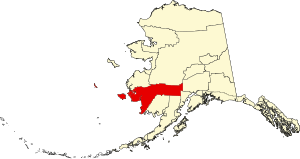I am lucky to be working for a district that provided a week long orientation for all new teachers in June. The district flew us all up to Akiachak--the largest village in the district where the district office is located--where we were not only able to see where we will be living and teaching, but also be taught a multicultural studies class that is required to renew an Alaska teaching license.
Orientation was exciting, overwhelming and invaluable to my ability to prepare for living in the village. There were 11 new teachers to the district who took part in orientation, 4 of us will be teaching in Tuluksak. When the 4 of us arrived in Tuluksak we met our village mentors, elders Ruth and Mo. Ruth and Mo are extremely kind and knowledgeable people who have lived in the village all their lives and raised many children there. They gave us a tour of the village that included the post office, clinic, bingo hall and jail. Ruth told me about the different subsistence seasons that occur in the village and how it might affect the students who are in my class (i.e. in the fall the boys leave on a moose hunt, in the spring the girls are out gathering eggs.)
At orientation we learned about the challenges of making Westernized education applicable to the lives of the people in the village. A comment I heard that will immensely impact my teaching methods was that my high school students have seen their family members maybe or maybe not graduate high school and it maybe or maybe not made their lives better. There are very few jobs in the village, which is difficult because it means young people who want to pursue an occupation often need to leave the village in order to do so. It also means that some who stay in the village become involved in substance abuse because they feel there is not much for them here. This is very distressing to their families and the elders because it equates success with leaving the village. There is hope in recent years that education will be able to become more culturally relevant, that the barriers created by No Child Left Behind will be combated by Native sovereignty, and that opportunities for young people in the village will grow. I'm excited to be a part of this slow but steady transition.






